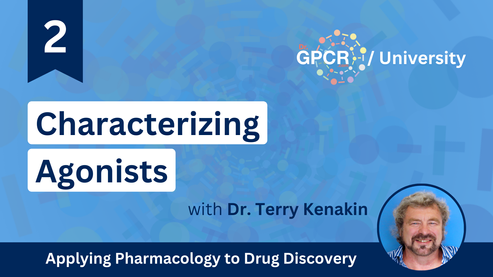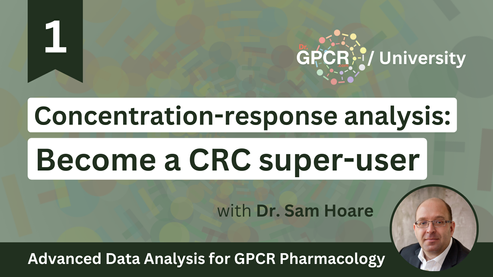Summary: "Class 3 - Characterizing Antagonists" by Dr. Terry Kenakin
This is an AI-generated summary. There may be inaccuracies.
In "Class 3 - Characterizing Antagonists," Dr. Terry Kenakin delves into the intricacies of antagonist characterization within the scope of drug discovery, particularly focusing on orthosteric binding. The lecture covers various aspects, including curve patterns from calcium assays, irreversible binding, the distinction between orthosteric and allosteric drugs, and inverse agonism.
Overview of Antagonist Characterization
Dr. Kenakin begins by discussing how antagonists produce different curve patterns, aiding researchers in understanding the interaction between agonists and antagonists at equilibrium. He outlines key concepts such as orthosteric competitive, non-competitive, and hemi-equilibria and how these are reflected in calcium assay results. The lecture also touches on the practical translation of in vitro patterns to in vivo behavior, noting that antagonists can exhibit partial agonist activity or act as inverse agonists.
Orthosteric vs. Allosteric Drugs
Dr. Kenakin emphasizes the importance of distinguishing between orthosteric and allosteric drugs. He explains that non-competitive agents can show surmountable or unsurmountable effects, and behaviors should not be confused with competitive and non-competitive designations. He suggests starting with a single concentration of agonist and varying antagonist concentrations to identify potential inhibitors.
Key Historical Contributions and Models
The lecture references the work of Sir William Pitts and Humphrey Rang on orthosteric interactions, introducing equations that describe antagonist actions in the presence of agonists. The Schild method for determining antagonist potency and the Gatam equation for non-competitive antagonism are explained, highlighting their relevance in modern pharmacological studies.
Kinetics and Binding
Dr. Kenakin discusses time-dependent inhibitions of cytochrome P450s and the importance of pharmacokinetics (PK) in measuring inhibitor impacts over time. He explains how in vitro patterns may not always predict in vivo results due to different kinetic behaviors. The concept of inverse agonism is explored, noting its discovery and the significance of measuring whether an antagonist is an inverse agonist.
Practical Implications and Case Studies
Dr. Kenakin provides practical insights into the effects of antagonists on receptor systems, using examples like the impact of inverse agonists on overexpressed receptors in cancer research. He discusses various real-time kinetics and constitutive activity scenarios, emphasizing the need for proper experimental design and validation.
Advanced Topics and Future Directions
The lecture briefly touches on advanced topics such as super-agonism, dimerization, and constitutive activity, suggesting these may be covered in future courses. Dr. Kenakin concludes with a discussion on optimizing experimental conditions, understanding receptor reserve, and the potential therapeutic applications of antagonists.
Overall, Dr. Kenakin's lecture provides a detailed exploration of antagonist characterization, highlighting the importance of understanding both the theoretical and practical aspects of drug-receptor interactions. Check the GPCR Lecture #3 here:



















